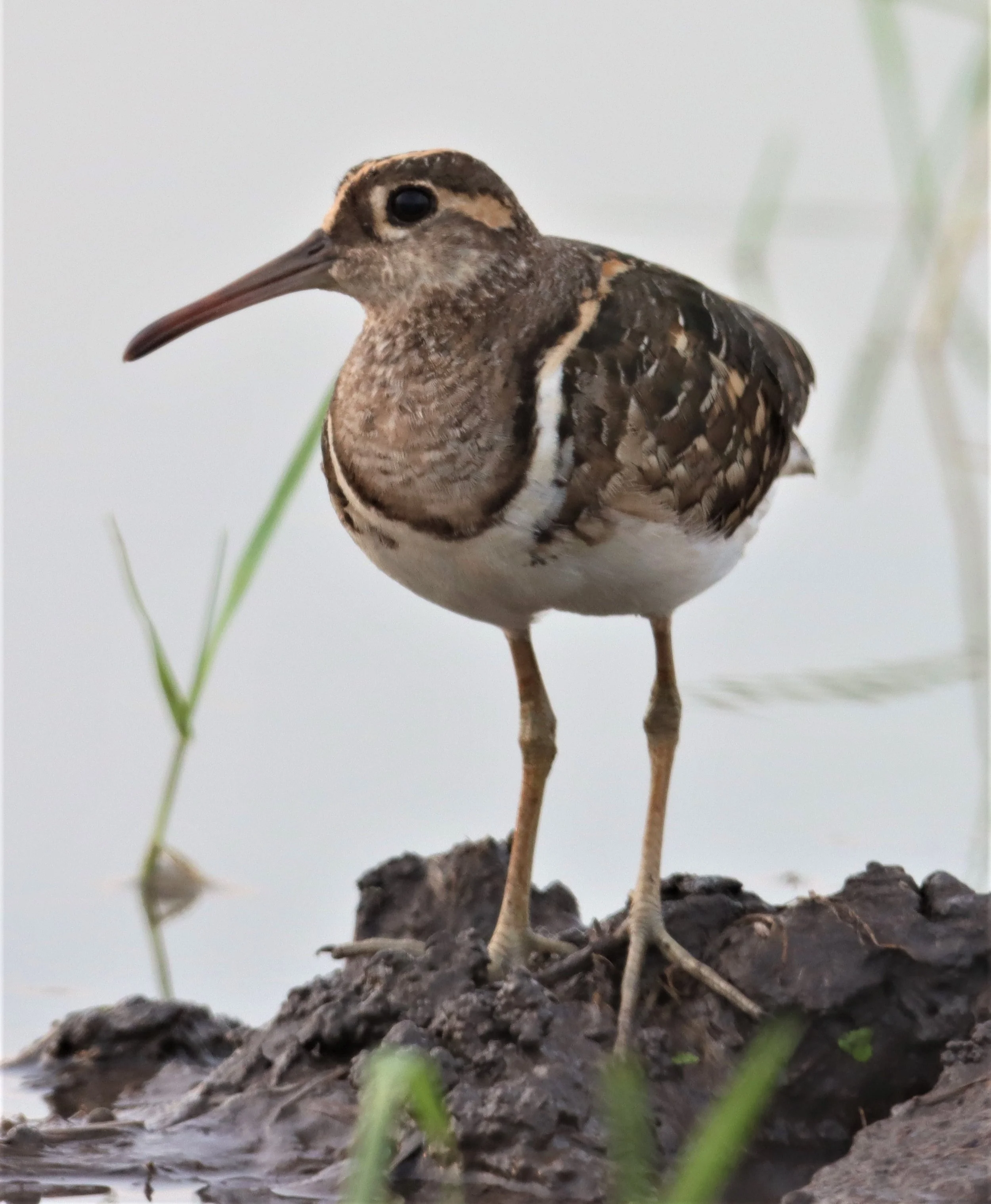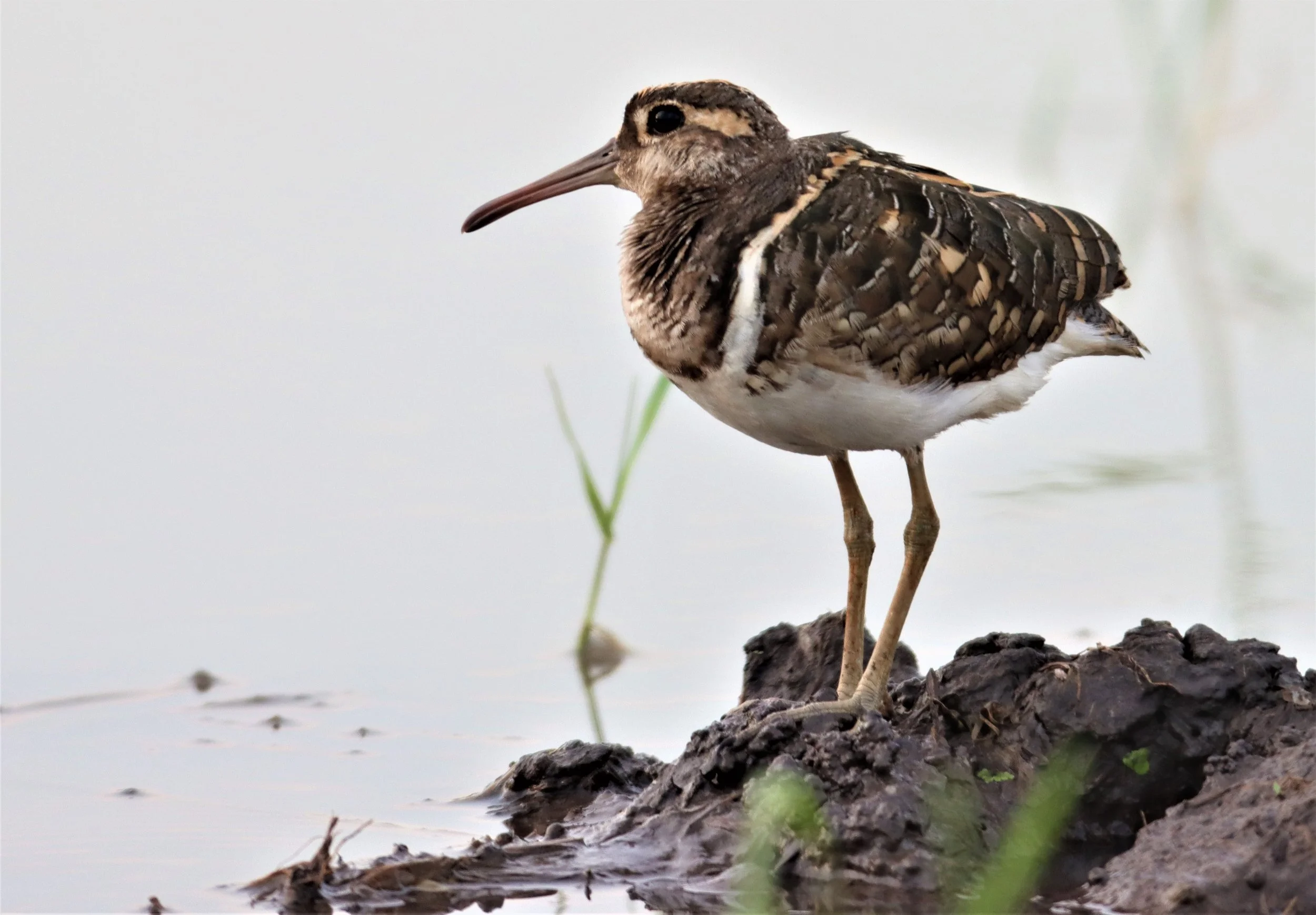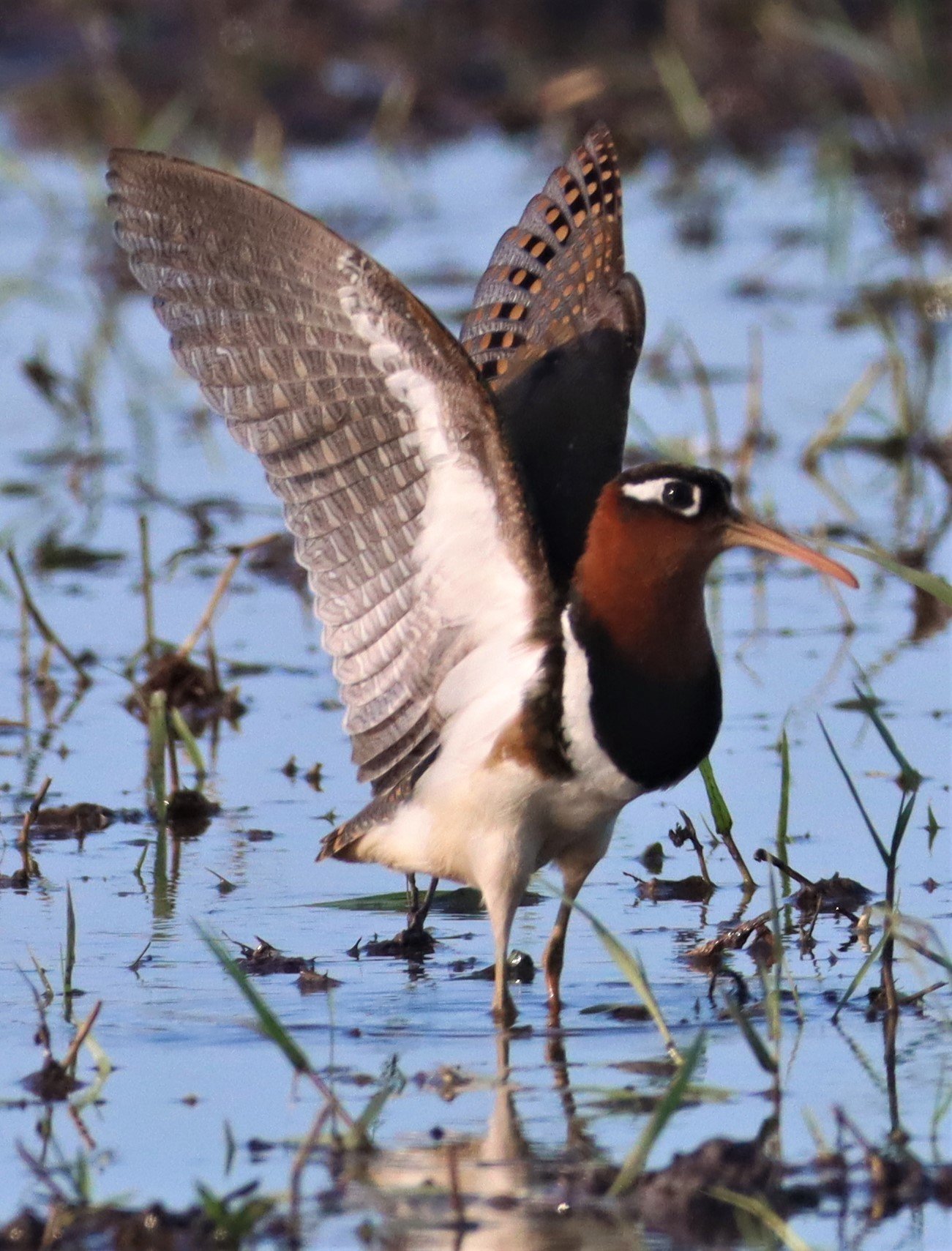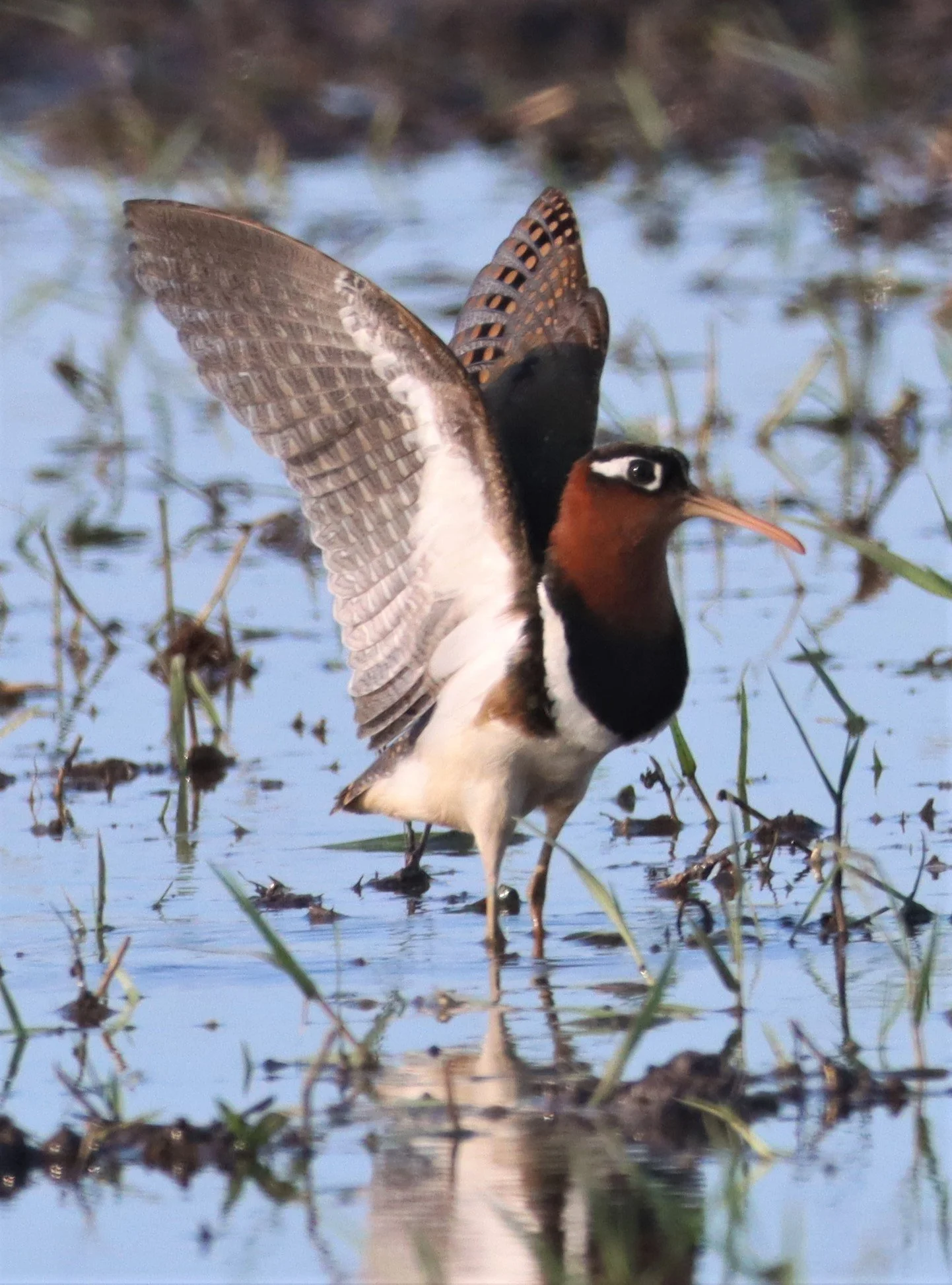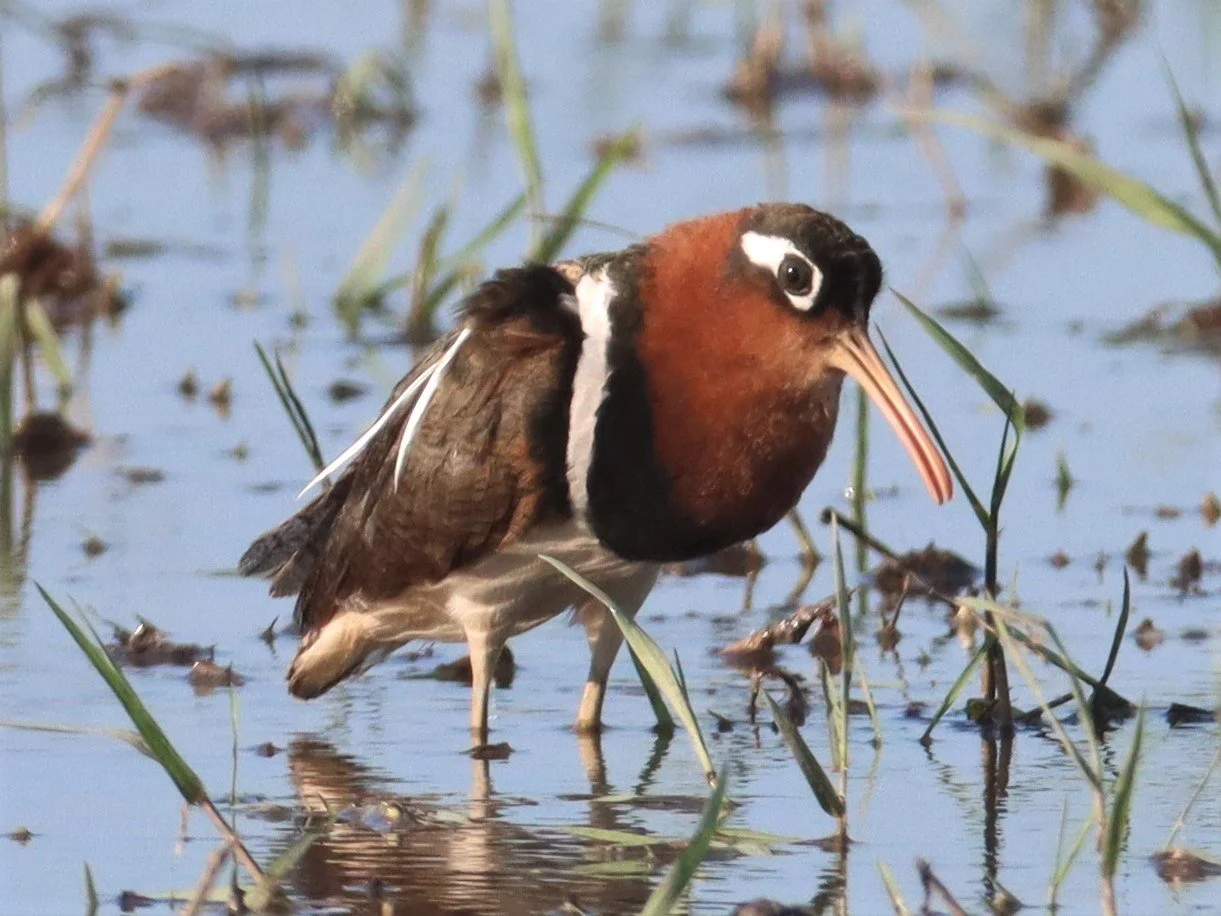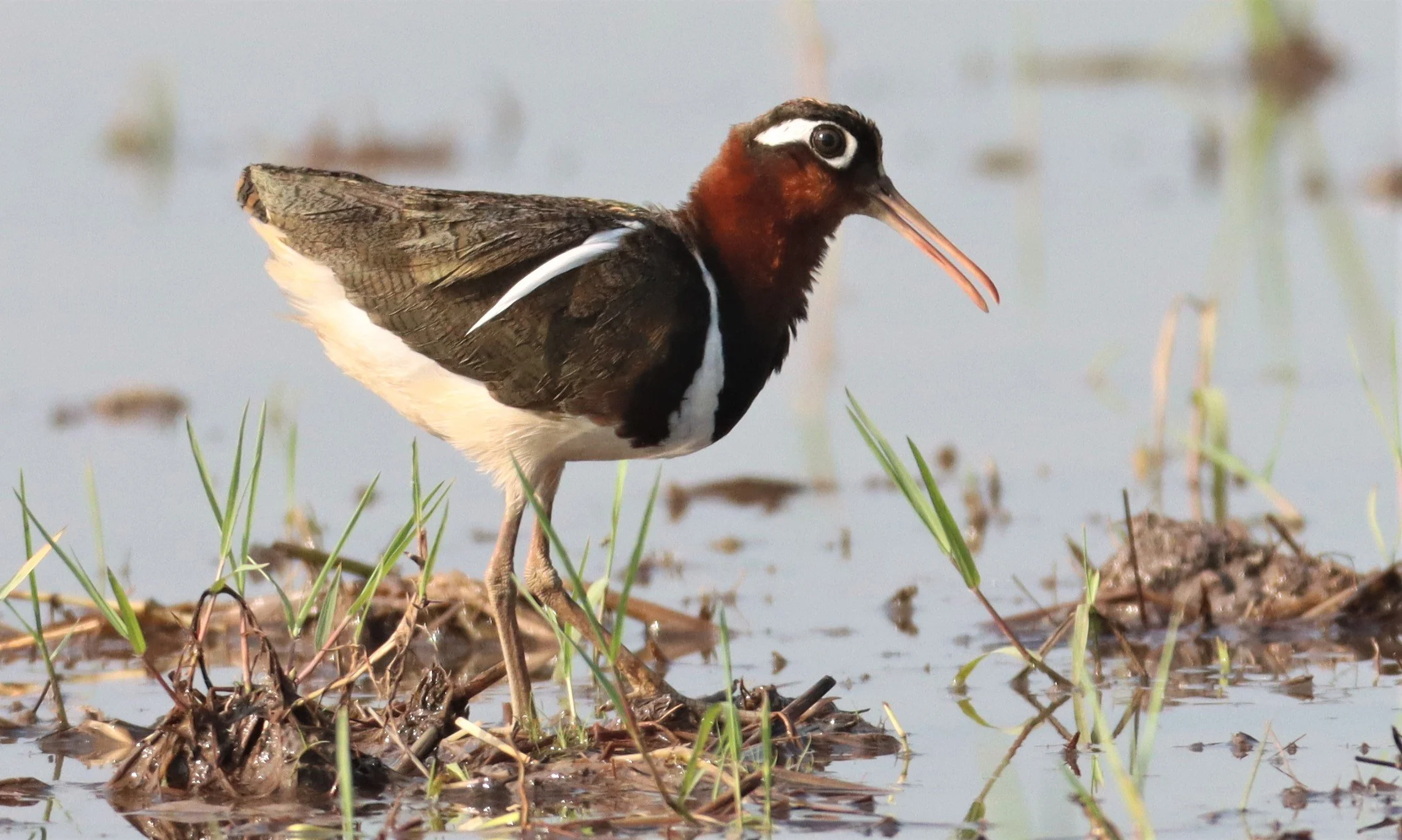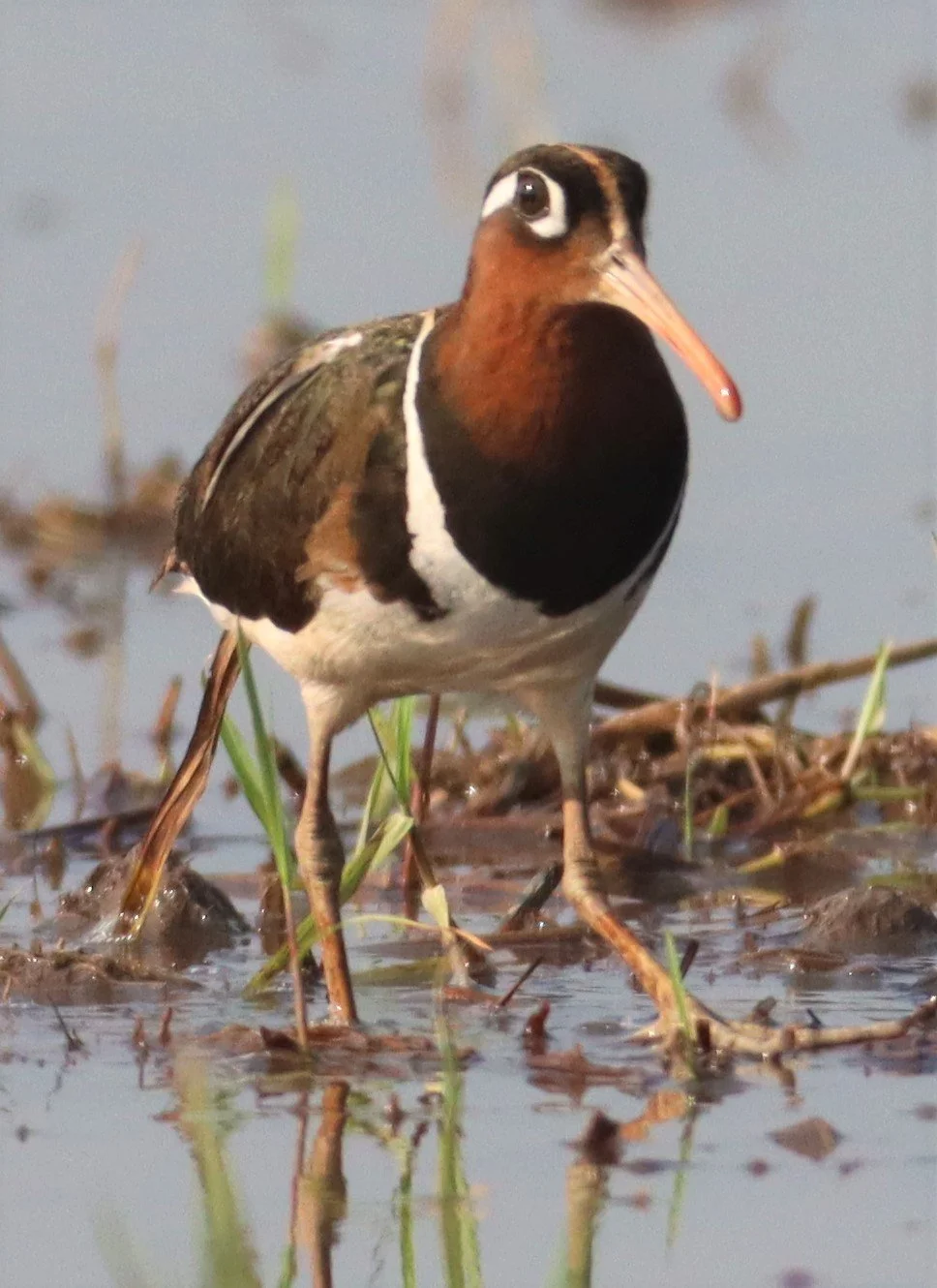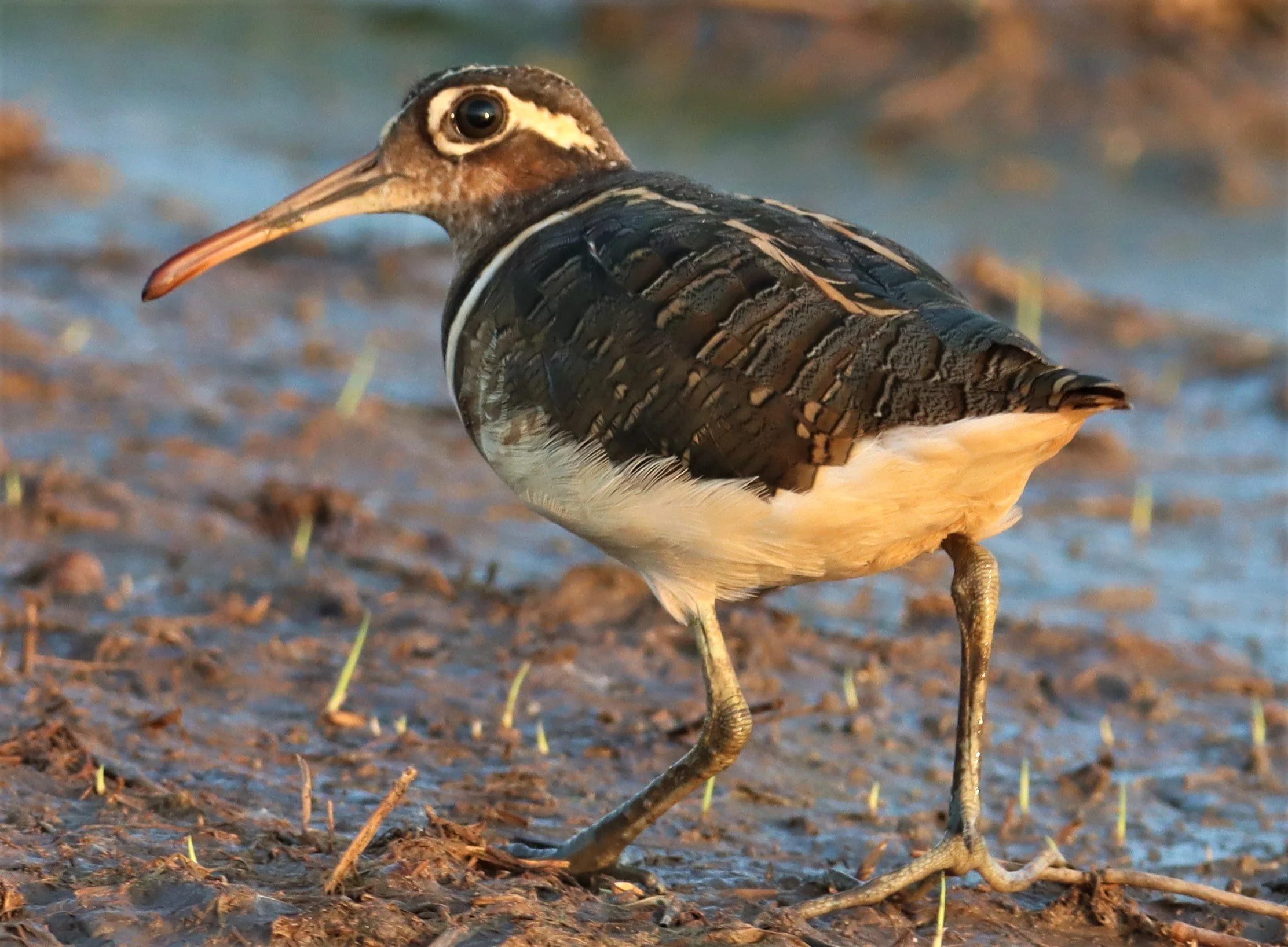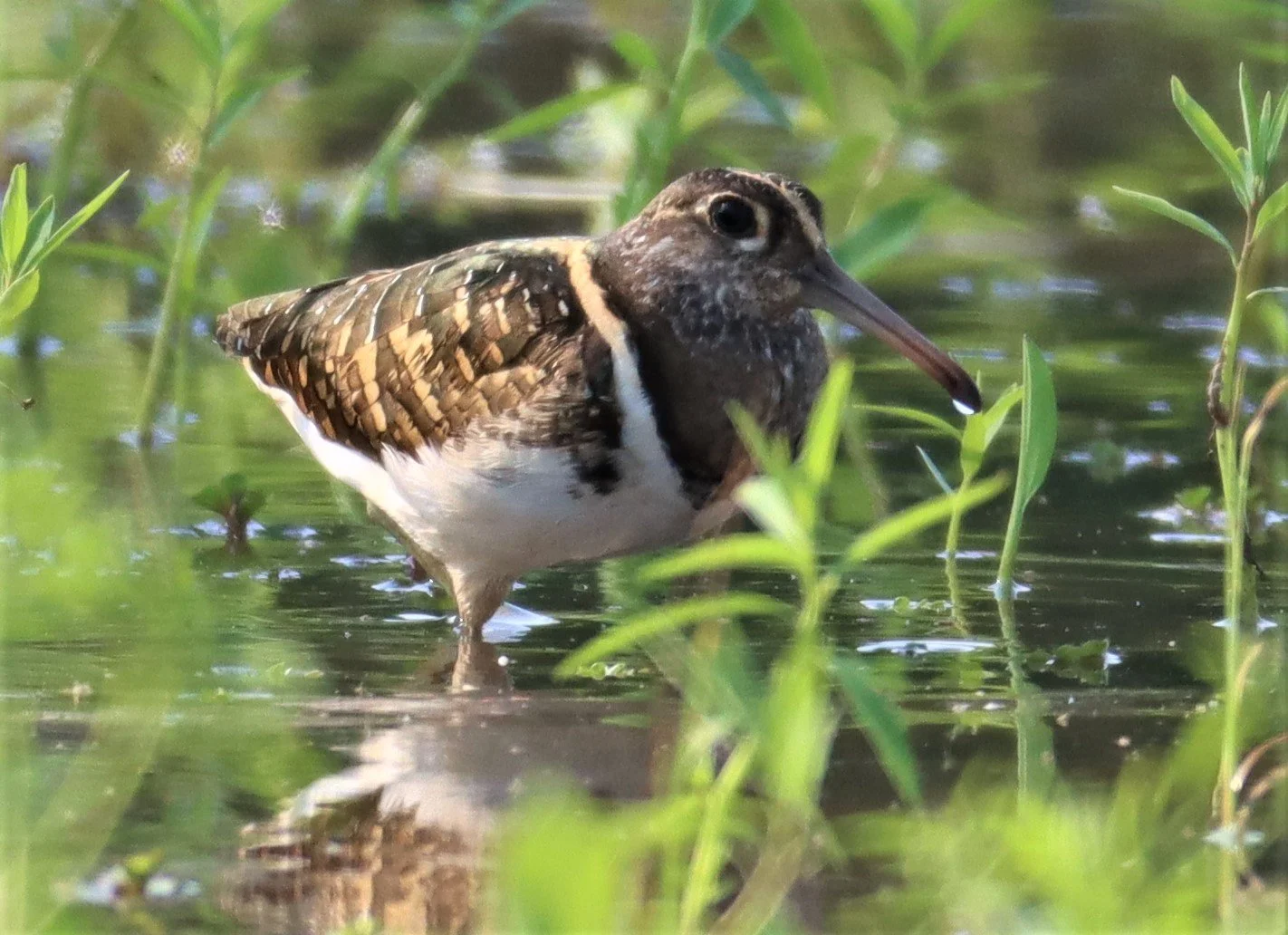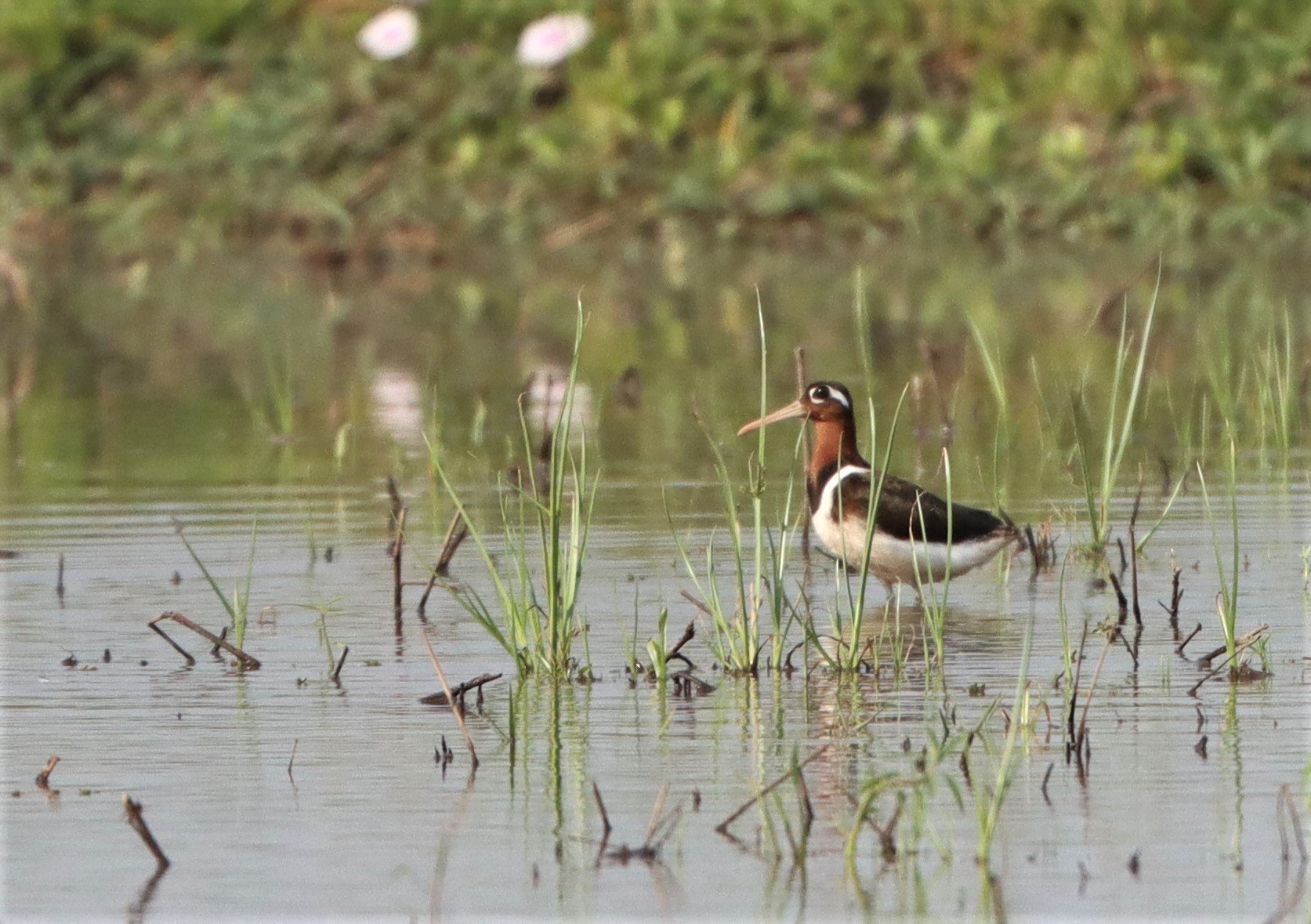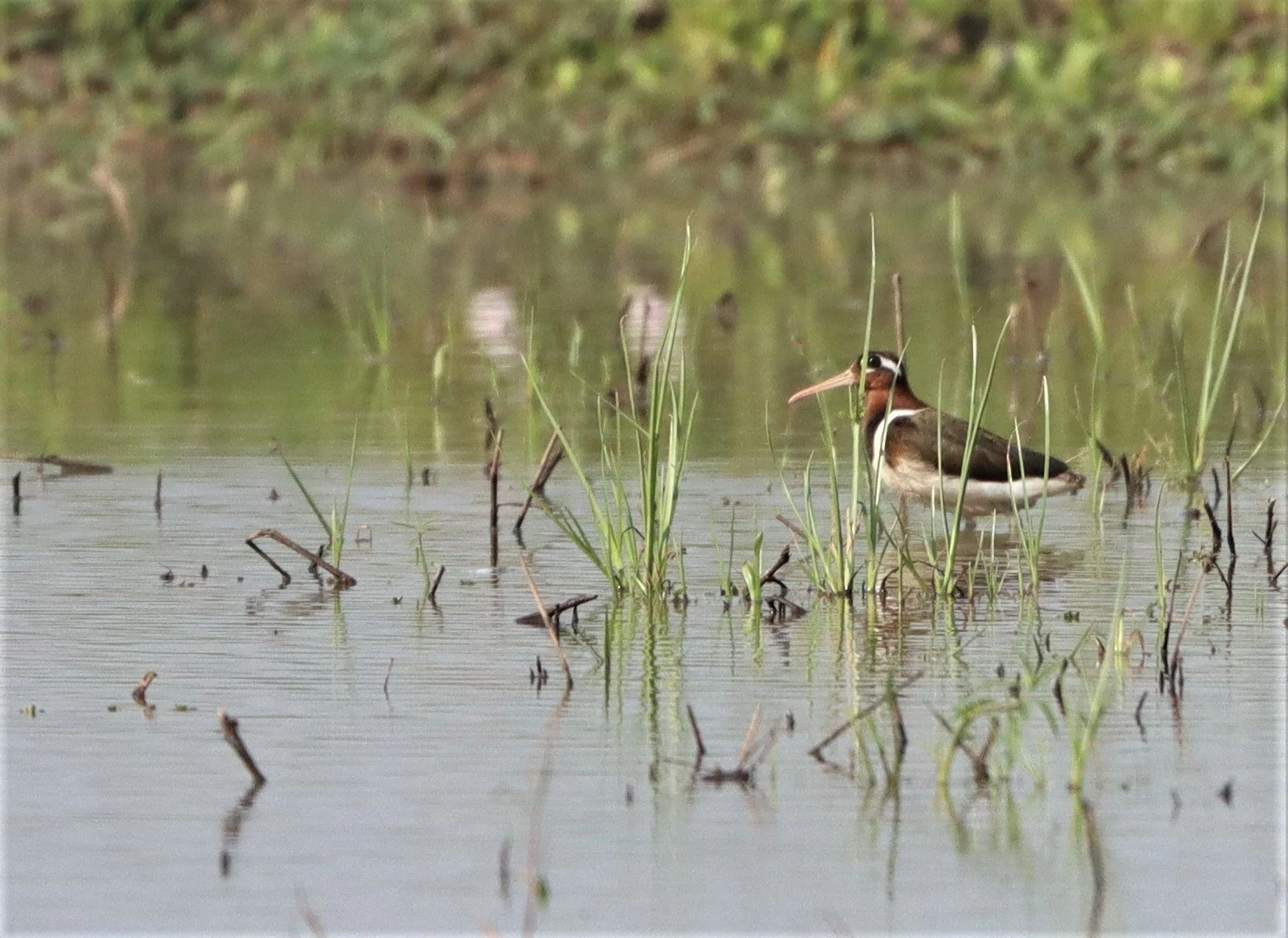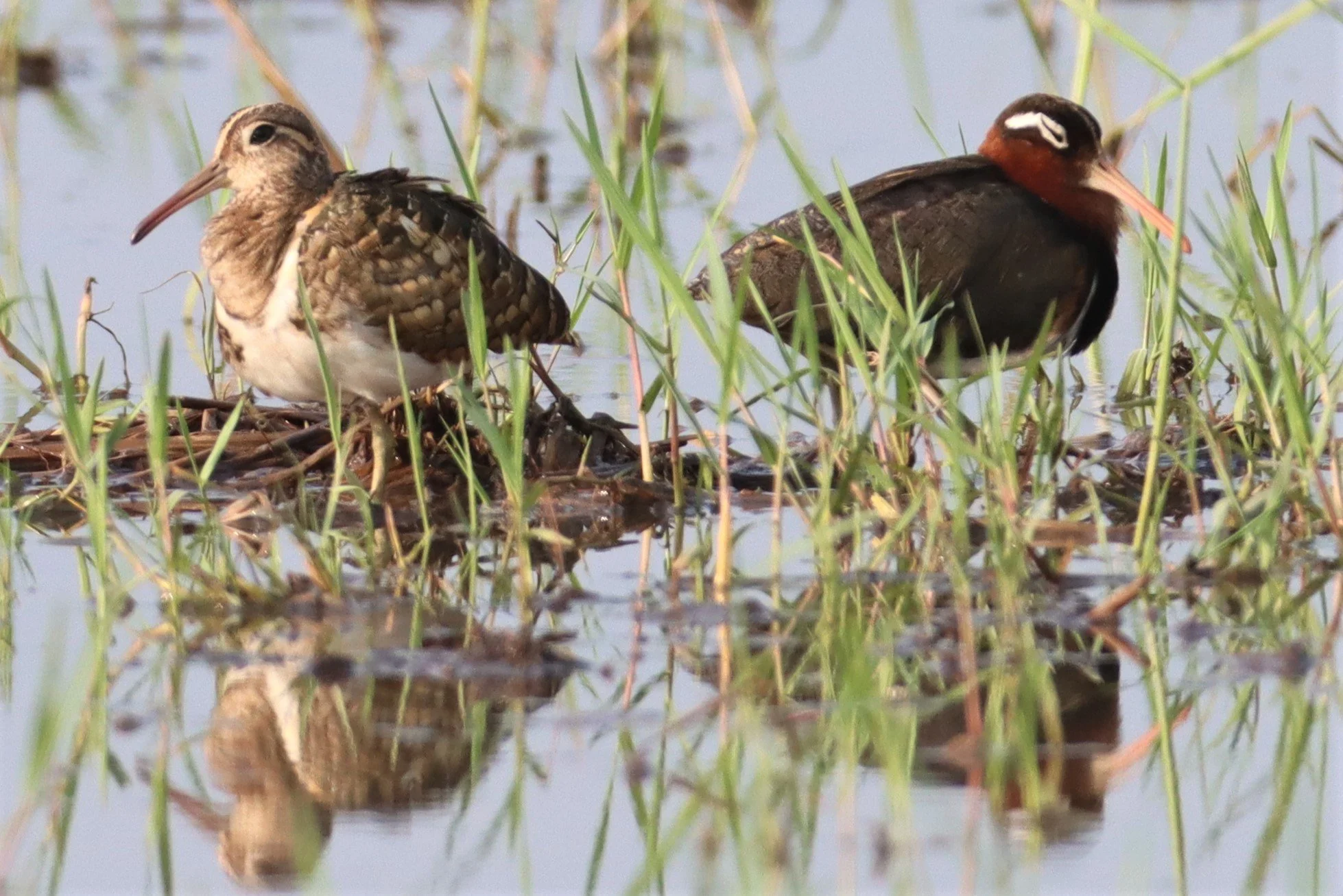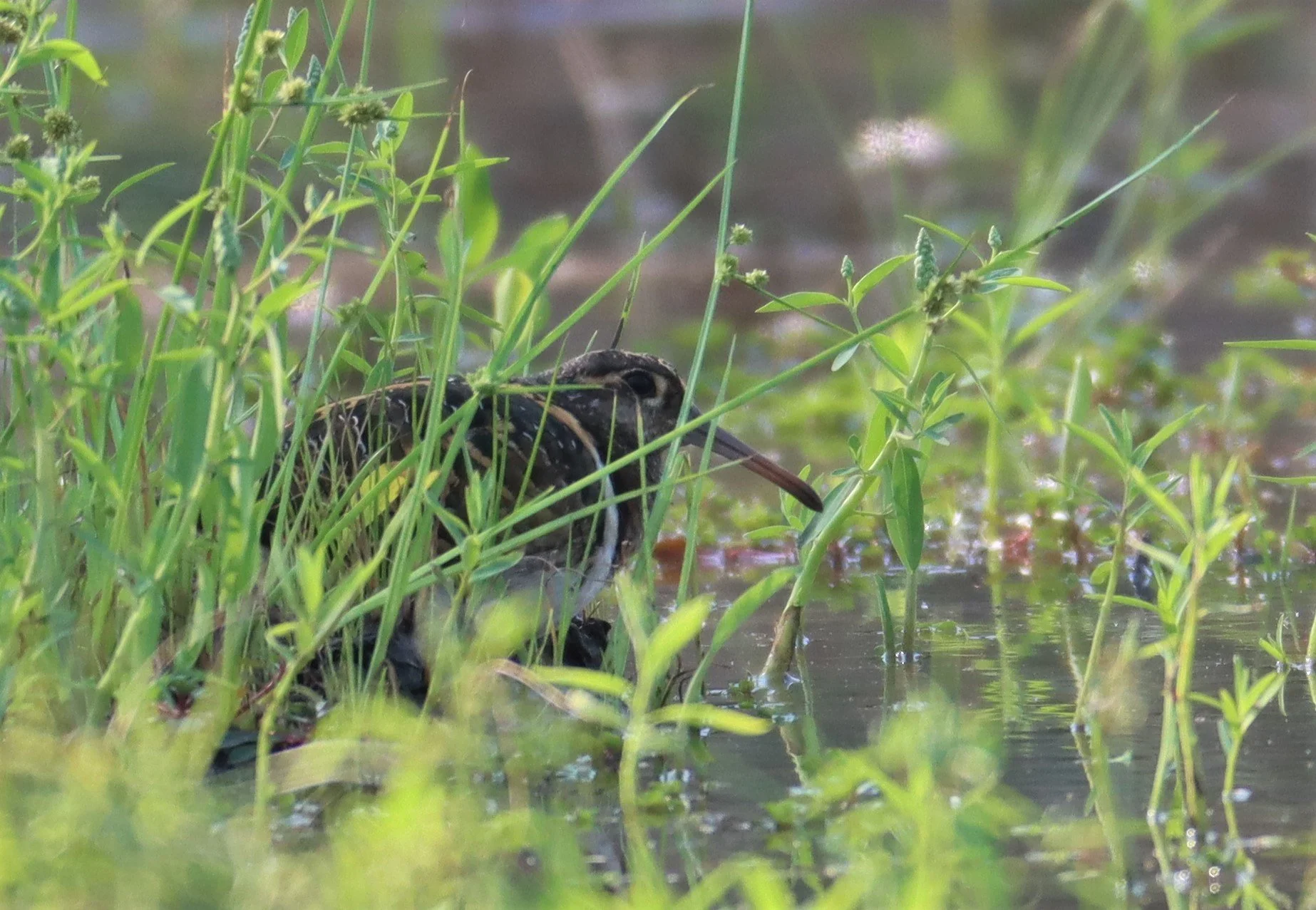
Greater Painted-snipe (Rostratula benghalensis)
The Greater Painted-snipe (Rostratula benghalensis) is a species of wader in the family Rostratulidae. It is found in marshes in Africa, South Asia and South-east Asia.
Female Painted Snipe displaying in the rice fields of Phatum Thani, Thailand
Medium-sized, plump wading bird. Long reddish-brown bill, slightly decurved at tip, and distinct white or pinkish eye patch. Rounded, buff-spotted wings and short tail. White of breast extends up around top of folded wing. The painted-snipe is not related to the true snipes and differs from them in habits, flight and appearance, being far more colorful and having longer legs than the snipes. It is unusual in that the female is larger and more brightly colored than the male, with the sides of the head, neck and throat a rich chestnut brown, and a distinct black band across the breast; the male is paler and greyer.
Not a vocal species; the male at times utters a shrill trill, while the female makes a guttural ook sound as well as hissing noises during breeding displays.
Usually found close to the fringes of reed beds along shorelines of marshes, swamps, ponds and streams.
Solitary or in pairs, sometimes in groups of up to 12. Rather shy and retiring, skulking close to the vegetation so that it can retreat to cover if disturbed. When flushed, flies like a rail with legs dangling. Bobs hindquarters on landing and sometimes when walking. Probes for food in the mud. The female initiates courtship and may mate with more than one male. The male incubates the eggs and takes the parental care.
They feed on insects, crustaceans, molluscs and seeds.
The females court the males, are polyandrous with males incubating and raising the young as predicted by parental investment theory. Chicks are buff coloured and have black stripes running along their length. Immature birds resemble the male but lack the broken dark band across the breast. Males are also known to carry the chicks to safety under the wings.
Male Painted-snipe is more cryptic than the female
The nest is usually a shallow scrape in soft ground, lined with plant material and situated among grass or reeds at the water's edge; sometimes a pad of vegetation or a nest of grass and weeds. The breeding season is between April and July.
A medium-sized, stunningly plumaged shorebird of grassy fields and marshes. Both sexes have a bright white “comma” around the eye and white underparts that extend up in an arc above the shoulder. As in phalaropes, the male is much duller than the female. The female has a bright reddish-brown head and greenish-tinged back and wings; the more cryptically colored male has a light brown head and brown upperparts dappled with orange and tan spots, thus more similar to snipe. Displaying female gives a series of owl-like hoots.
This massive gallery is a collection of images I took mainly at Pathum Thani Rice Research Center in Phatum Thani, Thailand. I can say that this species is what drew me in to bird photography. Ever since I knew of its existence, I thought it was one of the most spectacular birds around. Initially this was a nemesis species that eluded me for over a year, but after I knew how to search for and spot them, I found them quite easily in the rice paddies. One day, I spotted well over 40 individuals!
















